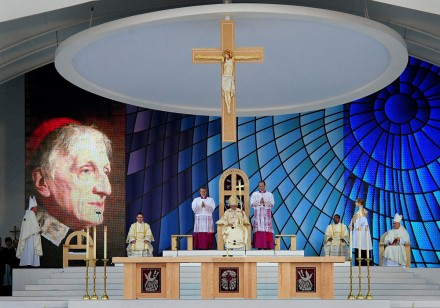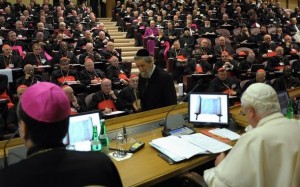
Only weeks before the beatification of Pope John Paul II, the Congregation for the Causes of Saints issued some new procedures for beatification ceremonies that will help distinguish them from canonizations, in which the Pope infallibly declares a Servant of God to be a “saint.”
During the first Christian millennium, the cult of martyrs and other holy men and women was regulated by local Church authorities. In the 11th century, however, the principle that as universal Pastor of the Church the Roman Pontiff alone has the authority to prescribe a public devotion began to gain prominence. With a Letter to the King and Bishops of Sweden, Alexander III asserted the Pope’s authority to confer the title of Saint and the relevant public cult. This norm became a universal law with Gregory IX in 1234.
In the 1300s, the Holy See began to authorize devotions limited to specific places and to certain Servants of God whose cause for canonization had not yet been initiated or had not yet reached its conclusion. This concession, with a view to future canonization, led to the preliminary stage known as beatification, in which a holy man or woman is declared a “Blessed.”
The Vatican document highlights the essential differences between a canonization and beatification: Continue reading A Blessed Affair
 The Pontifical Councils for Culture and Social Communications are organizing a gather of Catholic bloggers in Rome on Monday, May 2, 2011, the day after Pope John Paul II’s beatification.
The Pontifical Councils for Culture and Social Communications are organizing a gather of Catholic bloggers in Rome on Monday, May 2, 2011, the day after Pope John Paul II’s beatification. As I was navigating through the outstanding new
As I was navigating through the outstanding new